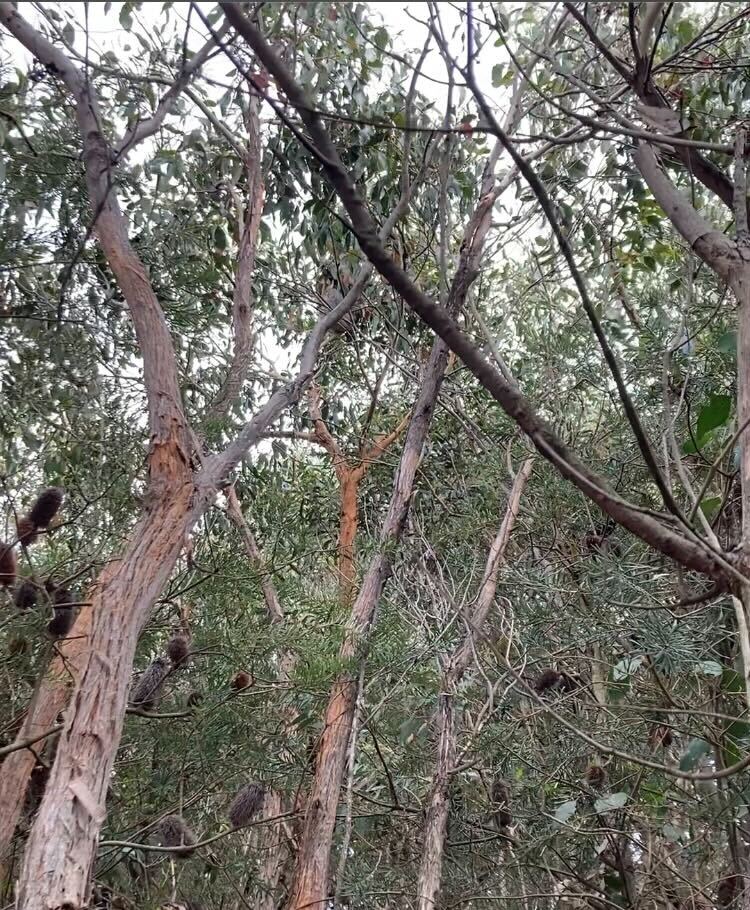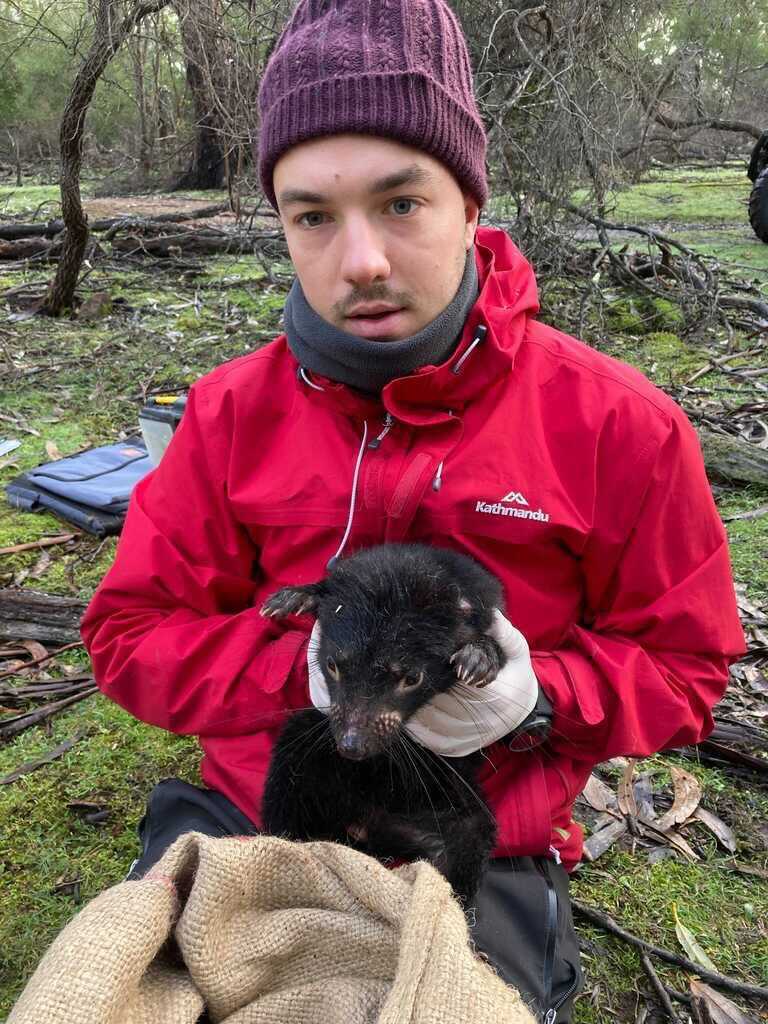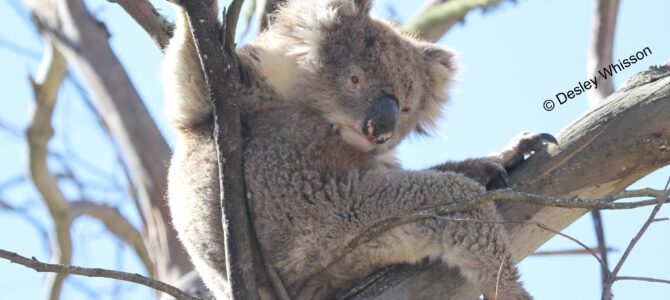by Dr. Luke Silver
Until recently, the majority of research in the Australasian Wildlife Genomics Group occurred on the Tasmanian devil and trapping these marsupial carnivores is quite a straightforward process. Setting a trap overnight baited with a tasty piece of fresh meat to lure the devils inside. Recently, I was lucky enough to be invited to Kangaroo Island to help out on a koala field trip. It turns out trapping herbivorous marsupials is a far more demanding task as unfortunately you cannot lure a koala with a fresh branch of Eucalyptus leaves.

Firstly, you have to actually find the koala in their environment, which can range of extremely tall Eucalyptus trees to highly dense shrubbery regions of bush. Fortunately, n Kangaroo Island koalas are so numerous locating one is not as difficult a task in areas such as NSW and QLD where koala numbers a much lower. After finally locating a koala the real work begins, coaxing the individual out of its comfortable and safe perch within the tree. This is best achieved by using an extendable pole with a piece of fabric attached to the end and simply waving this in front of the koala, who in ideal circumstances slowly backs down the tree trunk to height where they can be captured. Often, this is not the case, with koalas using any avenue possible to escape, including jumping to another nearby branch or tree. Being able to go into the field and see the animals we work up close is just one of the perks of working in wildlife research.

Author

Luke Silver (PhD Student) is using genomic data to
investigate immune genes in Australian marsupials with a focus on koalas where he is using resequenced genomes to examine patterns of diversity in functional and neutral regions of the genome across the entire east coast of Australia. This work will be used to inform conservation and management decisions in the fight to save our threatened species.
